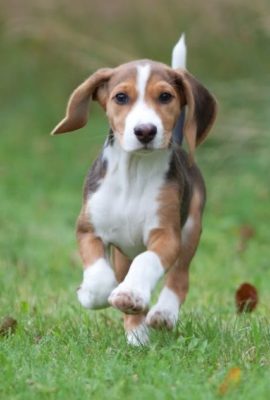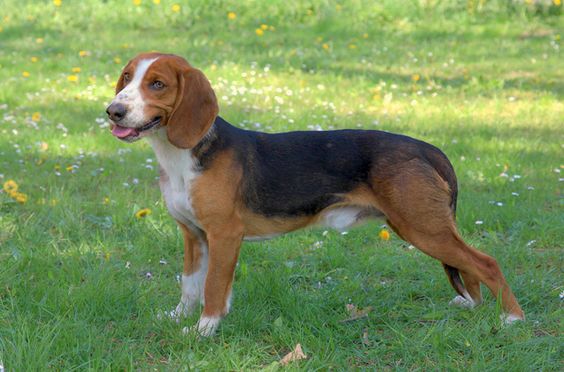German Hound

A compliant disposition and quite restrained temperament – so say breeders about the German Hound. Nature has awarded the dog a variety of talents in the hunt and everyday family life. Utterly loyal to the owner and family, obedient, the blanket of leadership will never drag on itself. Gentle and cautious when dealing with children, but only after proper training can they be left alone.
Table of Contents
Breed Information
| Another Name | Deutsche Bracke, German Bracke, Olper Bracke, Westphalian Bracke |
| Origin | Germany |
| Height | Males 49-53 cm Females 40-44 cm |
| Weight | 18-20 kg |
| Fur | Short |
| Color | Redhead, redhead and white, redhead and black |
| Lifespan | 10-12 years |
| FCI Classification | Scent hounds and related breeds |
| Group | Hunting dogs |
| Price | From $600 |
Breed Photos
Origin History
The German Hound is a breed of hunting hound that originated in the early 18th century when no one yet seriously thought about the breed’s standards and purebred breeding. The main thing was considered the working qualities of a hunting dog. According to one version of the origin of the breed, Celtic hounds were the ancestors of the German Hound and inherited the ability to work on the blood trail, drive the game, and work well with the owner. The German Bracke is the only German medium hound breed that has not disappeared from the earth’s face but survived and successfully developed Germany. In 1900 the breed was officially recognized by various dog breeding clubs.
Appearance
The Olper Bracke, as the German Hound is also called, is short in stature but with strong bones, a very hardy and robust dog. It is a typical hound in appearance: head with distinctive junction from forehead to muzzle and floppy ears close to cheekbones. The chest is long and broad; the back is straight and muscular, the croup is not too long and is slightly oblique, the belly is taut. The straight back is topped by a long tail covered with a thick coat. The German Hounds can be of different color variants: the full deer color with reddish or smoky tint, two-color black and pale, or tricolor with a dark chop.
Character
A compliant disposition and quite restrained temperament – so say breeders about the German Hound. Nature has awarded the dog a variety of talents in the hunt and everyday family life. Utterly loyal to the owner and family, obedient, the blanket of leadership will never drag on itself. Gentle and cautious when dealing with children, but only after proper training can they be left alone. No open aggression towards strangers, but no desire to get to know each other. Do not forget that this is primarily a dog for active hunting. Do not get as a pet, though.
Care
The German Hound was primarily bred for hunting small game, so it is suitable for avid hunters and gamekeepers. Regular exposure to the outdoors, walks in the woods, where they can one hundred percent show themselves and demonstrate their hunting skills, will make the German Hound the happiest dog on the planet. If you’re a lover of outdoor activities on the couch, don’t even dream of an active hunting breed. German Hound does not know what fatigue is; they are extremely hardy and perfectly oriented on the terrain. With such a guide, a hunter will never get lost. Having had enough of running in the fresh air at home, they will be obedient and quiet. A dog does not need thorough care; its fur tends to self-clean; if there is a desire, you can comb short and smooth hair, helping a dog get rid of old and dead hair. Check his floppy ears after every trip to the woods, as there may be surprises such as parasites, mites, or dirt.
Training
The German Hound is a fairly obedient dog breed, loves to obey, gets attached to his master, and is willing to kiss the sand he walks on. But, like all hunting dogs, it is endowed with independence and stubbornness. It is worth having patience and perseverance during training because any attractive smell or unusual sound will distract the Hound from the lessons for a long time. If you decide to have a German Hound as a pet, remember that you must often organize a simulated hunt in the form of a game in your yard. Praise, goodies, fair and patient attitude during training will help to achieve the desired results.
Common Diseases
German Hounds are characterized by high stamina and good health, but the wide ears adjacent to the cheekbones pose certain risks. They block the access of air to the ear canal, and insufficient ventilation contributes to inflammation development.
The most common diseases of the breed include:
- hip dysplasia;
- eye problems;
- cryptorchidism;
- sensitivity to anesthesia;
- gastric torsion.
Nutrition
In the process of forming the diet of German Hounds, it is important to use high-quality protein foods – lean meat and by-products: liver, scars, lungs. High exertion leads to an increased need for proteins. Another critical component of a dog’s diet is vegetables and cereals, and even bread in dried form. Carbohydrates partially compensate for the lower amount of fats on the menu. It is advisable to increase the intake of animal fats during the cold season time of the year. Even a balanced diet is recommended to be enriched with bone meal and synthetic vitamin supplements.
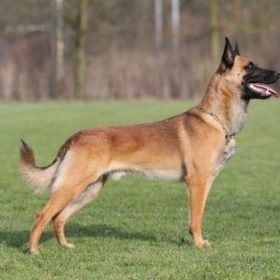 Belgian Shepherd Malinois
Belgian Shepherd Malinois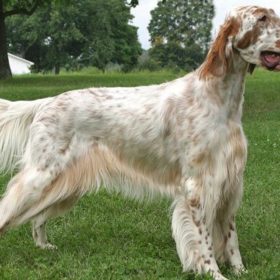 English Setter
English Setter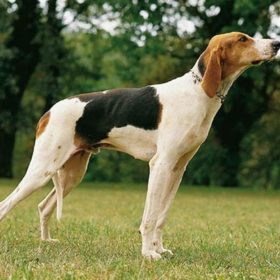 Chien Français Tricolore
Chien Français Tricolore Lapponian Herder
Lapponian Herder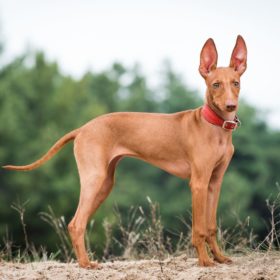 Cirneco dell’Etna
Cirneco dell’Etna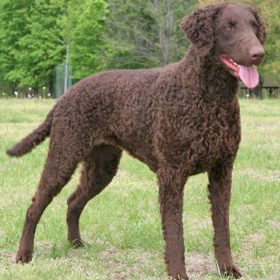 Curly-coated Retriever
Curly-coated Retriever
